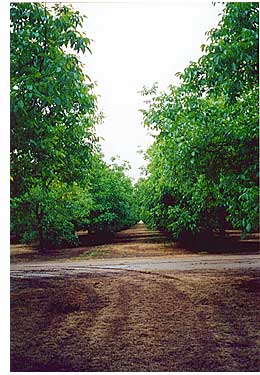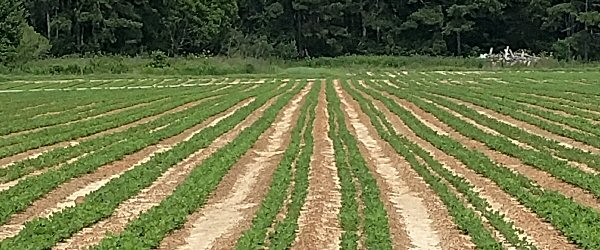 The Center for Agricultural Partnerships initiated its Sacramento Valley "Putting the Farm Bill to Work" project in the summer of 2004 in cooperation with Almond Board of California, Del Monte Foods, the Dried Plum Board and Diamond Walnut. The project, focused in the Sacramento Valley was intended to increase the ability of Northern California specialty crop producers to increase the number of growers applying for EQIP contracts in the region. To read an article about the work of this project over the past year click here. To read about the experiences of a grower who already had success using EQIP click here.
The Center for Agricultural Partnerships initiated its Sacramento Valley "Putting the Farm Bill to Work" project in the summer of 2004 in cooperation with Almond Board of California, Del Monte Foods, the Dried Plum Board and Diamond Walnut. The project, focused in the Sacramento Valley was intended to increase the ability of Northern California specialty crop producers to increase the number of growers applying for EQIP contracts in the region. To read an article about the work of this project over the past year click here. To read about the experiences of a grower who already had success using EQIP click here.
The CAP staff worked with each of the participating organizations to develop an information piece that outlined the basic opportunities available through EQIP and a customized guide, Succeed with EQIP, to assist growers in the application process. Using that information, project staff worked with the grower organizations and companies to provide growers with the awareness and knowledge necessary to successfully apply to EQIP. Del Monte Foods held two meetings for its growers: a briefing was held in September with key growers and a larger meeting in November with two dozen of its growers in the Yuba City area to inform and encourage them to take advantage of the program particularly in the application of IPM practices. Growers were provided basic information of EQIP, a copy of the Guide, and the names of consultants working with CAP who could provide assistance. The Almond Board provided the information through its California Almonds Grower Newsletter (PDF) as did the Dried Plumb Board.
To provide direct assistance to interested growers, CAP contracted with four PCAs in the Sacramento Valley who had strong working relationships with growers, provided strong environmentally sound IPM programs, and who were willing to spend the time to become familiar with NRCS procedures. The consultants provided services to walnut, almond, peach, and dried plum growers primarily in Yuba, Sutter, Butte, Glenn, and Colusa counties. Due to the interest of one of the consultants, efforts to also included apple and pear growers in El Dorado, Yolo, Solano and Sacramento counties.
Although growers can sign up for EQIP at any time during the year, the PCAs focused on completing grower applications in time for the late January deadline for applications to be ranked for 2005. Through the efforts of the PCAs, 33 growers on 45 orchards covering 7633 acres, were included in EQIP applications. While some of the applications were eventually denied or withdrawn by the growers, 5048 acres in contracts were approved, all of them incorporated pest management as a primary component. The individual techniques in the pest management plans included mating disruption for oriental fruit moth and codling moth, reduced risk pesticides and mating disruption for navel orangeworm, reduced applications for peach twig borer and San Jose Scale, reduced rates for dormant sprays, and advanced scouting programs. Since successful applications to EQIP typically involve practices to address multiple resource concerns, the PCAs included water quality concerns, through irrigation improvements to address water conservation concerns (2/3 of the applications), chipping of brush to address air quality concerns, along with stream buffers and nutrient management practices to further address water quality concerns.
A windfall for the project was the designation of several watersheds in the Sacramento Valley as Conservation Security Program (CSP) priority watersheds for 2005. As a result, the consultants who work primarily in Butte and Glenn counties also assisted their growers in applying to CSP. In addition, a large pear and apple grower in the Sacramento delta also applied for CSP.
The project’s approach to increasing awareness and assisting growers in applying to EQIP has filled a critical outreach and technical assistance gap in NRCS programs. This particular gap is of primary importance to specialty crop, or any growers for that matter, who have little familiarity with NRCS programs. Filling the gap will continue to be important if EQIP is to achieve its potential in helping growers reduce pesticide risks and achieve other conservation benefits.
Putting the Farm Bill to Work Quick Links
- Appalachian Region
- California
- Georgia
- Michigan
- North Carolina
- North Carolina Apple Growers
- North Carolina Nursery Crops
- North Carolina Christmas Trees
- North Carolina Strawberry Growers
- North Carolina Strawberry Survey
- North Carolina Sweetpotato Producers
- North Carolina Sweetpotato Survey Summary
- Western North Carolina Vegetable Growers
- Oregon

